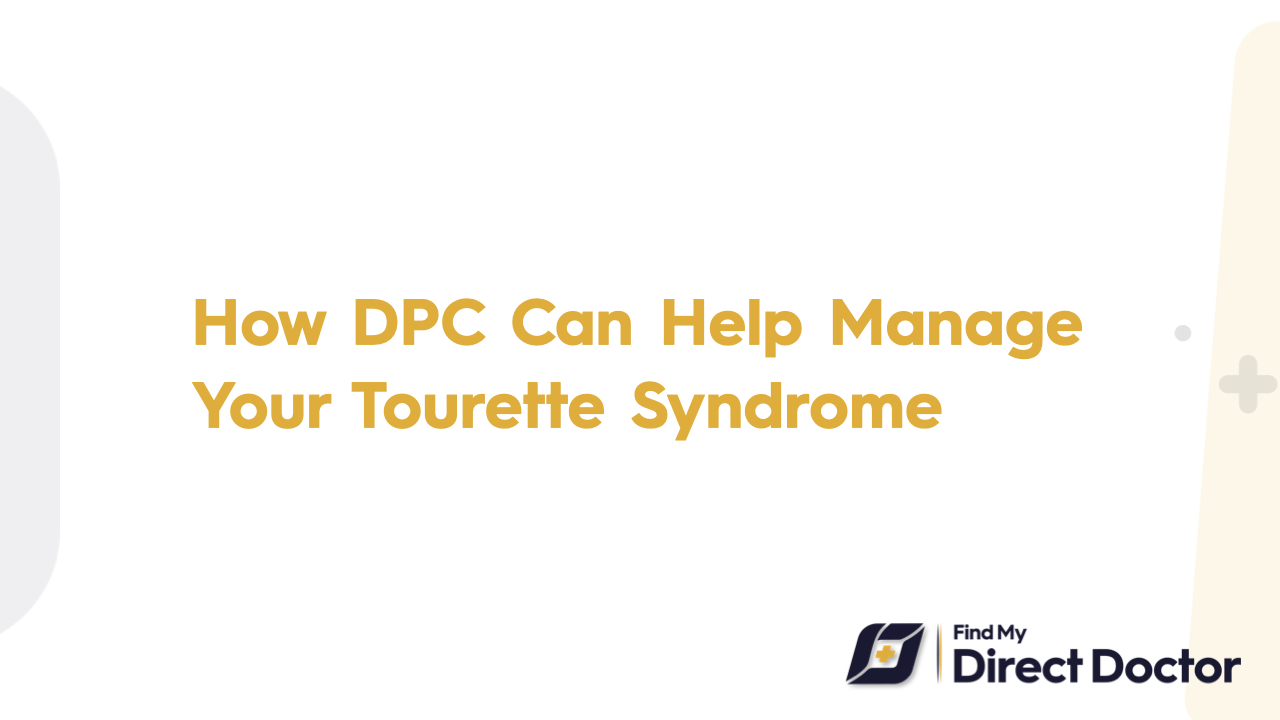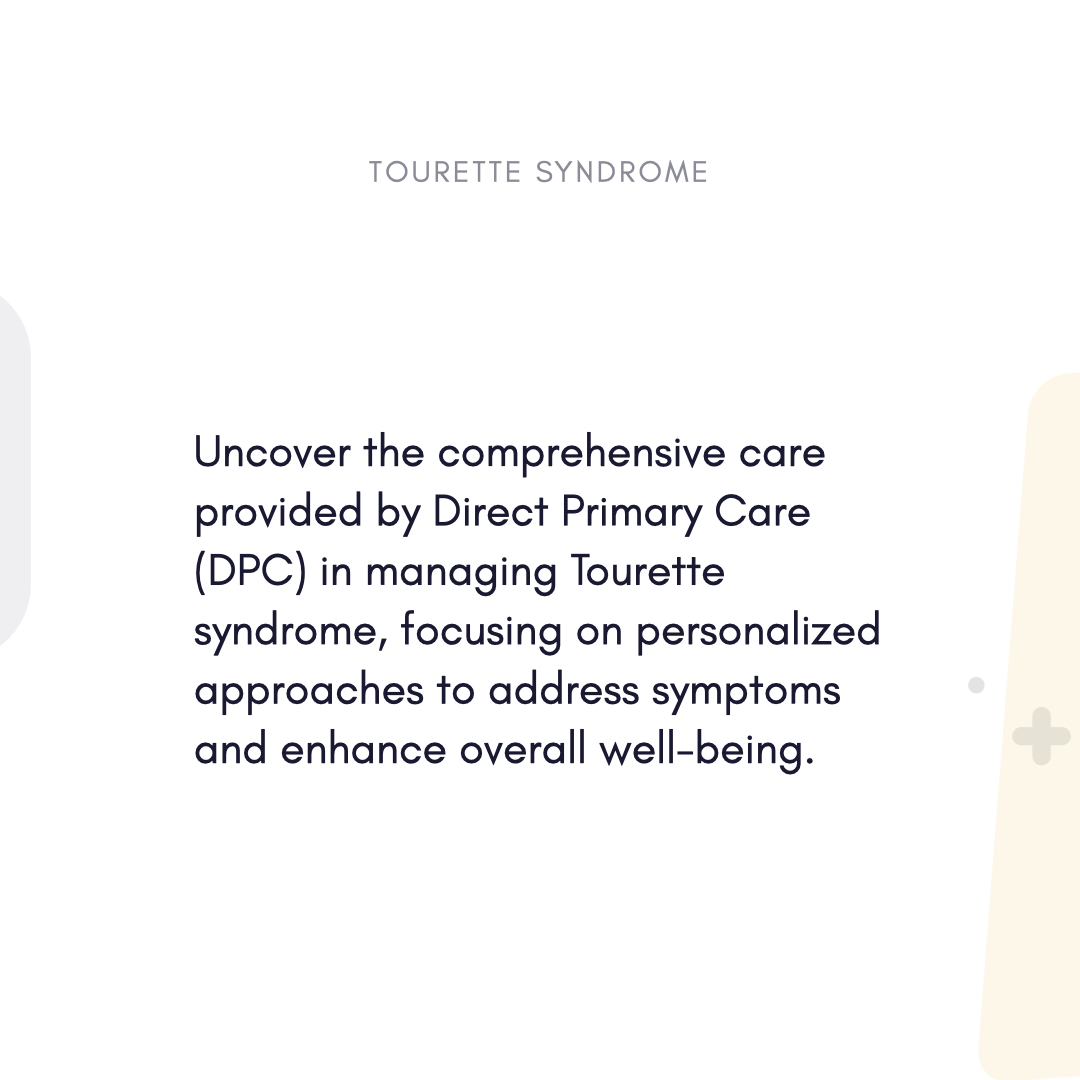Tourette Syndrome and Direct Primary Care (DPC): Tailored Care for Tic Management
You know the complexity of Tourette Syndrome (TS) if you have ever battled social stigma, battled the annoyance of involuntary tics, or juggled drugs for comorbid ADHD and OCD. Affecting one in 160 children, TS calls for lifetime, multifarious treatment. Direct Primary Care (DPC) presents a patient-centered approach to TS management, combining fast access, cost transparency, and strategies to enhance quality of life.

Knowing Tourette Syndrome and Its Difficulties
TS is a neurodevelopmental condition marked by:
- Blinking, throat clearing, or coprolalia—rare—motor and vocal tics.
- Comorbidities include 60% ADHD, 50% OCD, 30% anxiety.
Effects:
- Academic/work challenges, social isolation.
- Side effects from medications—sedation, weight increase.
- Behavioral therapies for managing parental stress.
DPC Changes How TS Care
Under the membership model known as Direct Primary Care (DPC), patients pay a monthly fee—usually 50 USD–150 USD—for unlimited access to their main care physician. For TS patients, this means no surprise bills, no waiting months for specialists, and treatment emphasizing total well-being.
Here's why DPC distinguishes itself:
1. Early, thorough assessments
DPC doctors follow AAN recommendations including:
- Yale Global Tic Severity Scale tic tracking.
- Vanderbilt for ADHD; CY-BOCS for OCD; comorbidity screening.
- Reviewing medications means changing antipsychotics or alpha-agonists.
2. Reasonably priced, multimodal therapy
- DPC clinics offer generic guanfacine/clonidine at wholesale rates, so lowering costs.
- Working at cash rates with therapists for CBIT (Compensive Behavioral Intervention for Tics).
- Offering comorbid anxiety/depression telehealth psychiatry.
3. Advocacy and Constant Support
Families can:
- Change CBIT strategies as tics change with 24/7 access to your DPC doctor.
- Control side effects from medications—that is, from haloperidol to ariprazole.
- Get help with school accommodations using IEP/504 plans.
DPC: Benefits for TS Patients
Personalized Care Plans
- Each visit, DPC doctors spend 30 to 60 minutes developing plans including:
- Tiered treatments: CBIT first, then medications as necessary.
- Dietary changes: Cutting sugar or caffeine that aggravates tics.
- Hygiene of sleep: treating comorbid insomnia.
Savings on Cost
- Not one co-pay for regular tic checks.
- CBIT sessions at 80 USD instead of 200 USD plus with insurance.
- ER visits avoided by means of proactive crisis management.
Comprehensive Family Therapy
DPC addresses:
- Parental education: Instruction in tic redirection techniques.
- School advocacy: Getting extra time for tests.
- Mental health: CBT for tic suppression related anxiety.
Stories from Real-Life Success
- Case 1: Using DPC-prescribed CBIT and guanfacine, 14-year-old Jake cut his vocal tics by 70%, so avoiding antipsychotics.
- Case 2: With her DPC doctor's fluvoxamine schedule, 30-year Emily managed TS + OCD and saved 1,200 USD/year on specialists.
Questions of FAQs: DPC and Tourette Syndrome
- Q: Can TS get better over time?
- A: Tics often strike in adolescence and fade by adulthood. DPC enables peak management.
- Q: Is DPC within families with several comorbidities reasonably priced?
- A: Absolutely. Often less expensive than personal insurance, family plans cover all members.
- Q: What should I do if I need a neurologist?
- A: A DPC arranges referrals and works on cash rates for consultations.
Why DPC Is a Win for TS Patients?
Early behavioral treatment is stressed by the Tourette Association of America. DPC implements this by:
- Early tic recognition: Avoiding social and educational fallout.
- Tools for tic awareness and control help patients to be empowered.
- Simplifying the treatment: One monthly cost covers advocacy, treatment, and medication.
Using DPC, take charge of your tics.
Tourette syndrome does not have to control your life. Every tic, every treatment, every step toward confidence—DPC helps you to find a partner who listens, innovates, and gives your dignity top priority.






